Our River Collection is a set of eight luxury silk scarves featuring nature-inspired shibori designs. Anisha, Saffron Marigold’s chief creative and the mastermind behind this beautiful collection, is here to share her inspiration and process behind this new launch. We’ll get the scoop on what this collection represents and we’ll get a behind-the-scenes look at our artisan’s studio in India. Experience the graceful flow of the world’s rivers, letting it sweep you away to parts unknown…Meet our exclusive River Collection of shibori silk scarves.
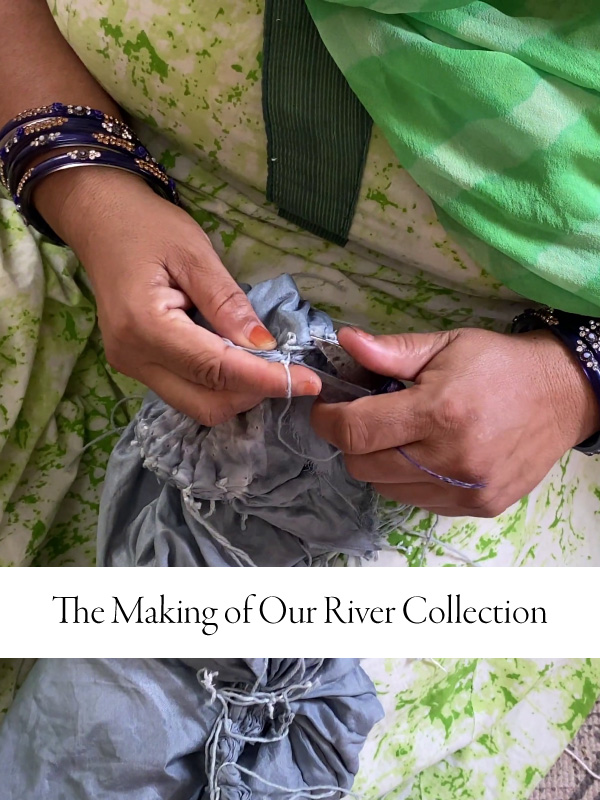
River Collection: Ideas flowing in our designer’s mind
American poet Laura Gilpin wrote, “A river seems a magic thing. A magic, moving, living part of the very earth itself.” Saffron Marigold’s head designer Anisha thought the same.
In creating the River Collection, she was inspired by the different moods and elements that affect a river such as how light dances off of the river’s surface or the icy blue color of snowmelt that births some of Earth’s largest waterways.
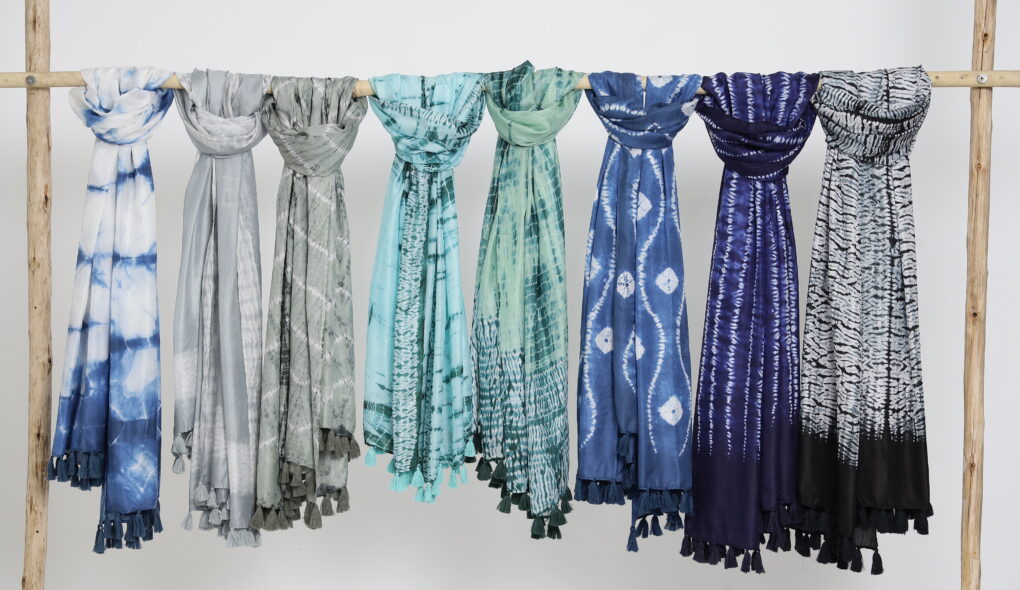
Rivers sustain most life, feeding farmlands, filling drinking wells, housing water creatures, and transporting goods. Ever-changing and persistent, they are are the lifeblood of humanity.
To Anisha, rivers are the most poetic form of water found in nature—rhythmic, flowing, and full of life. With the River Collection of shibori silk scarves, let yourself be swept away gently into the beautiful and graceful flows of the world’s greatest rivers.
Shibori, a traditional tie-dyeing technique
Anisha wanted to capture the essence and inspiration of each river by incorporating shibori designs in different ways for each silk scarf. Whether it’s moonlight dancing on water, or the look of multihued stratified rock along a river’s route, Anisha’s visions shine through.
Shibori is the Japanese word for the many ways artists shape, compress, and secure fabric before it is dyed. Literally, it means to wring, squeeze, and press, and this type of tie-dyeing or resist dyeing method is found in many cultures.
Shibori dyeing requires a few key steps: sketching the design onto the fabric, stitching the fabric, gathering the strings, dyeing, and pulling out the strings. Some steps may vary between each method as each shibori technique produces a unique design.
The inspirations for each design
Instead of a poignant poem, Anisha interpreted nature’s splendid rivers through textiles, her blank canvas luxurious silk.
Amazon
The Amazon silk scarf showcases the undulating tatewaku design, resembling rising steam off of waterways in the springtime.

An ogee pattern with gentle curves, this silk scarf represents the graceful meandering of the Amazon as it journeys towards the Atlantic Ocean.
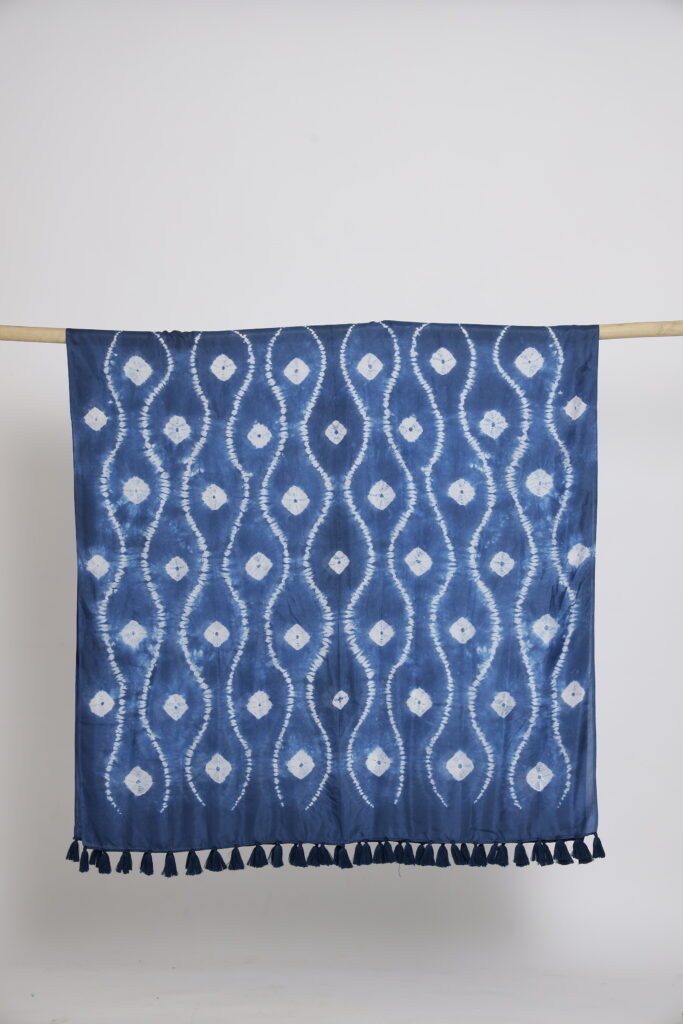
Ganges
Icy blue with a rich, textured border, the Ganges silk scarf represents the glacial snowmelt that comprises the river Ganges.
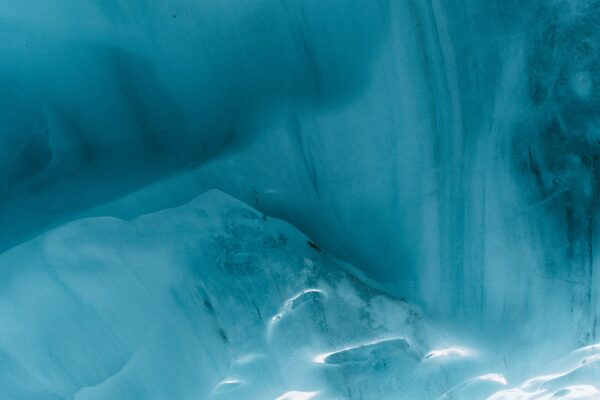
Using the mokume technique and two separate dyes, our artisans produced this alluring, two toned shibori scarf.
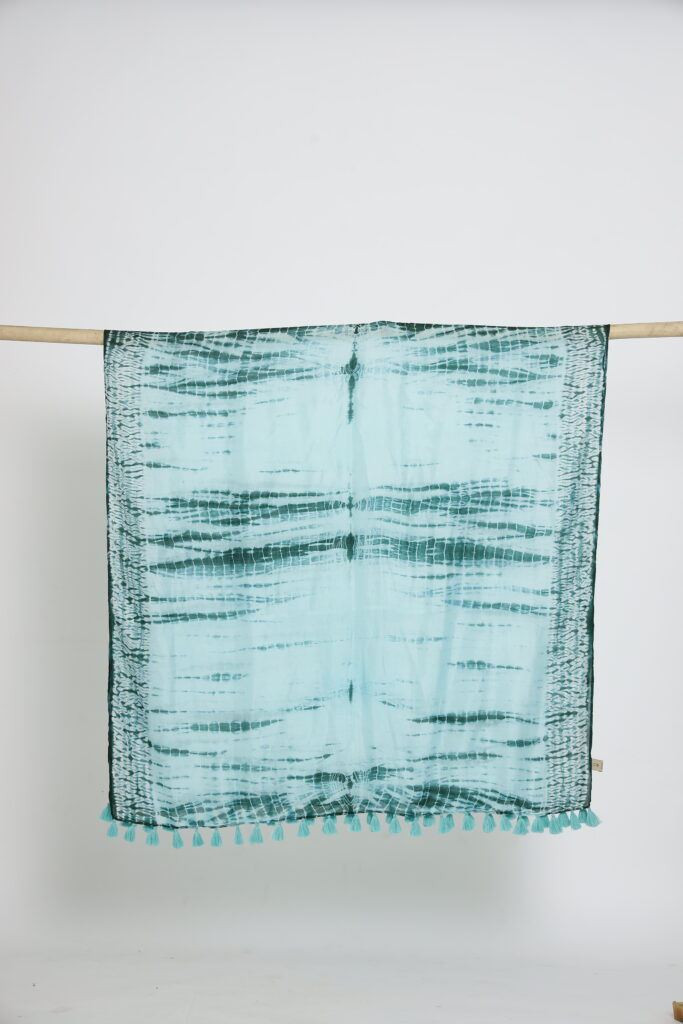
Indus
Inspired by the magical effect of moonlight reflecting on choppy waters, our Indus scarf is an enchanting sight.
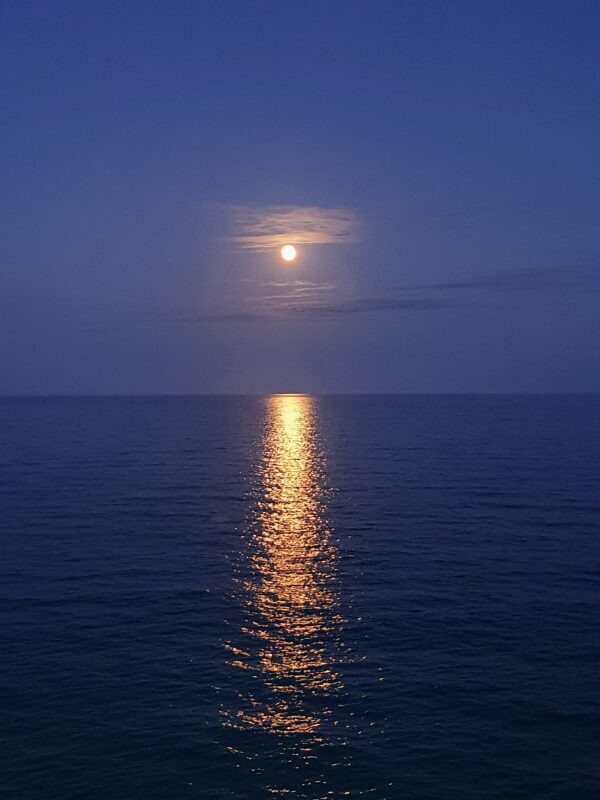
We recreated how moonbeams dance off of the mirror-like facets made by waves and ripples through the mokume or wood grain technique to create an elegant black and white scarf.
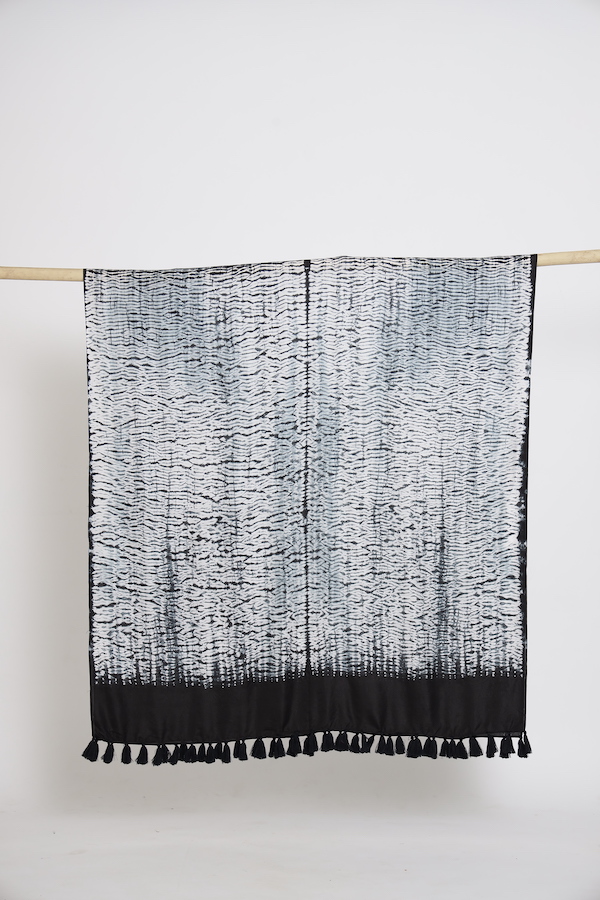
Nile
Like a galaxy of stars materializing on the surface of water when sunlight or radiant moonlight touches it, our Nile silk scarf is equally dazzling.
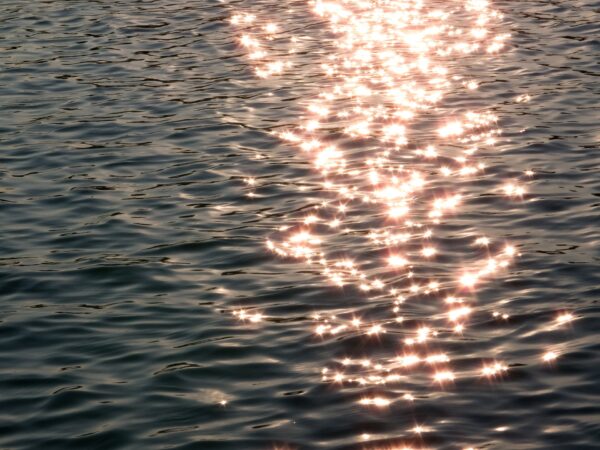
Neat rows of ori nui stitching create parallel white lines on a deep indigo ground for a beautiful blue scarf that’ll elevate any outfit.
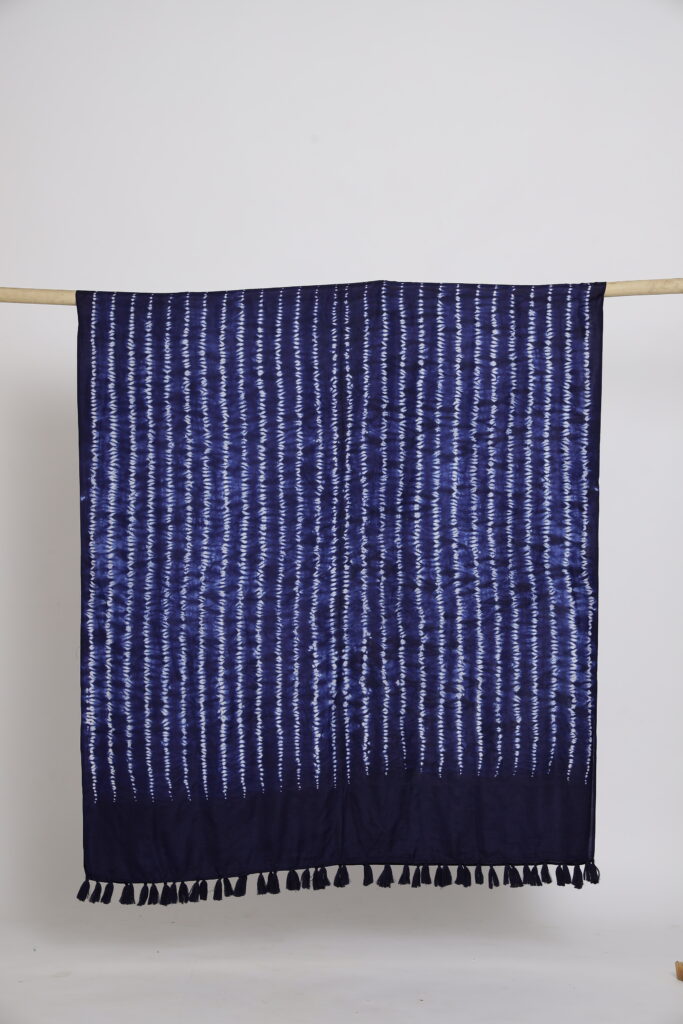
Onyx
Our Onyx silk scarf portrays the hypnotic waves that ripple across water when an object breaks the surface—a falling leaf, a pebble, a raindrop.
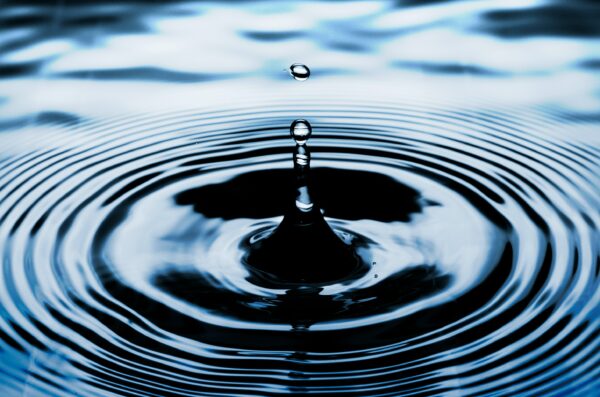
Using the karamatsu or Japanese larch shibori technique, our skilled artisans were able to achieve the concentric circles with the distinct branching pattern for this refined, light grey scarf.
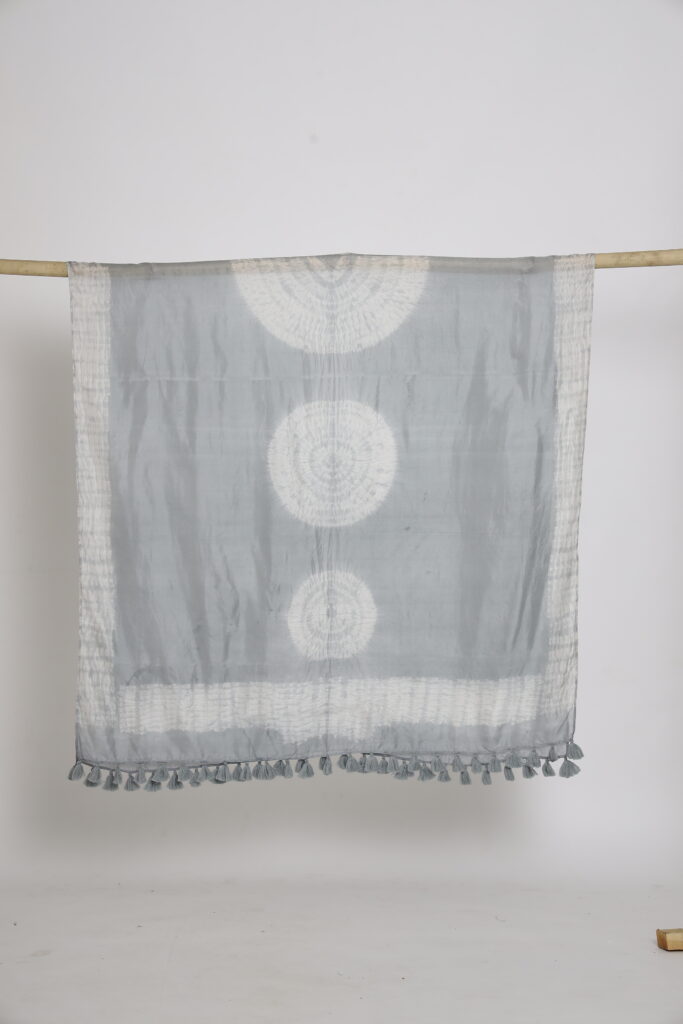
Rio Grande
In a remote part of Texas, the Rio Grande flows through a primordial canyon made of multicolor stratified rock glistening with water.
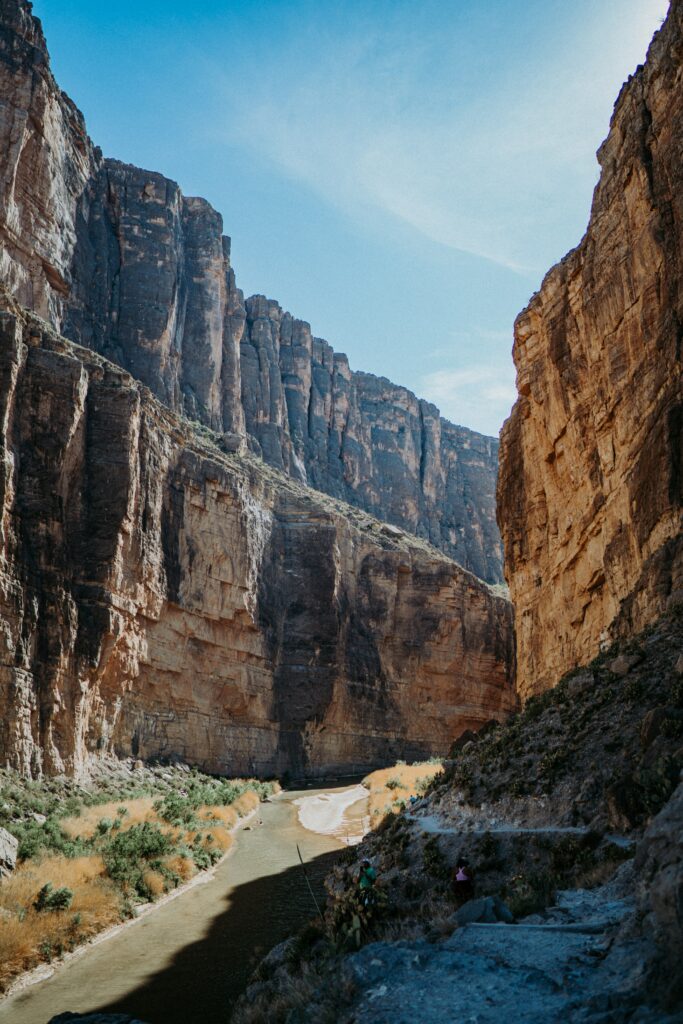
Our Rio Grande silk scarf evokes this majestic scene with its chevron pattern and two-toned effect representing the multihued layers of rock.
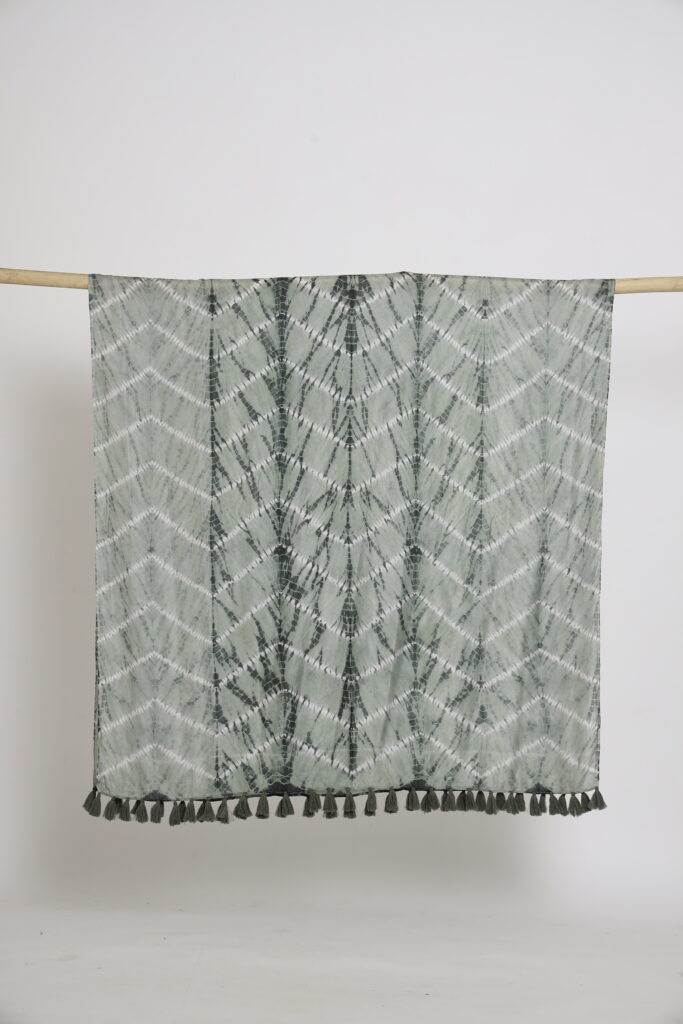
Volga
When sunlight hits the surface of a large body of water, the water distorts the light and reflects it into different directions, a phenomenon referred to as caustics.
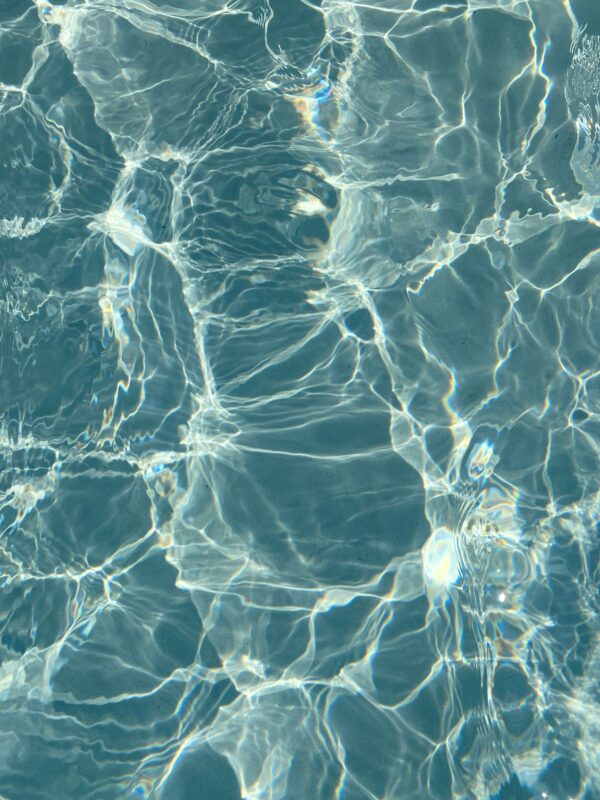
It’s hard to capture evolving light patterns that shift with the water, but we managed to distill this fleeting moment with our Volga silk scarf using itajime, the wood-clamp dying technique.
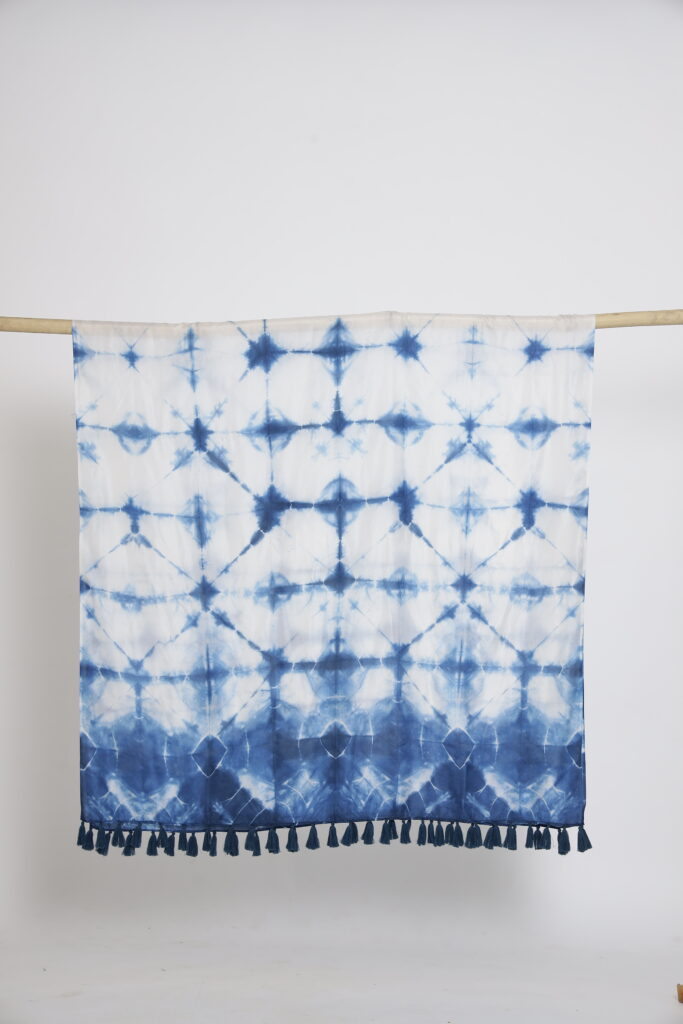
Yangtze
China’s most important waterway, the Yangtze River, brings water to the nation’s main grain farmlands. This river is a prominent part of China’s culture, but we also wanted to incorporate another element of Chinese culture to our silk scarf, the gemstone jade.
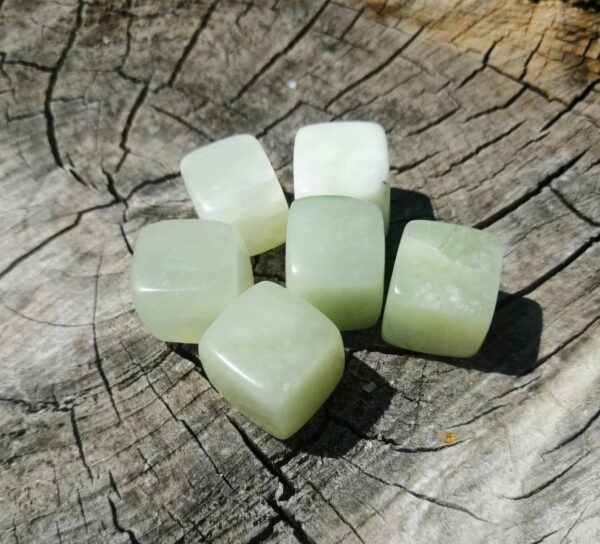
Using two different dyes and the wood grain technique, we created a two toned, textured silk scarf that honors jade, which represents soul, heaven, and immortality in Chinese culture.
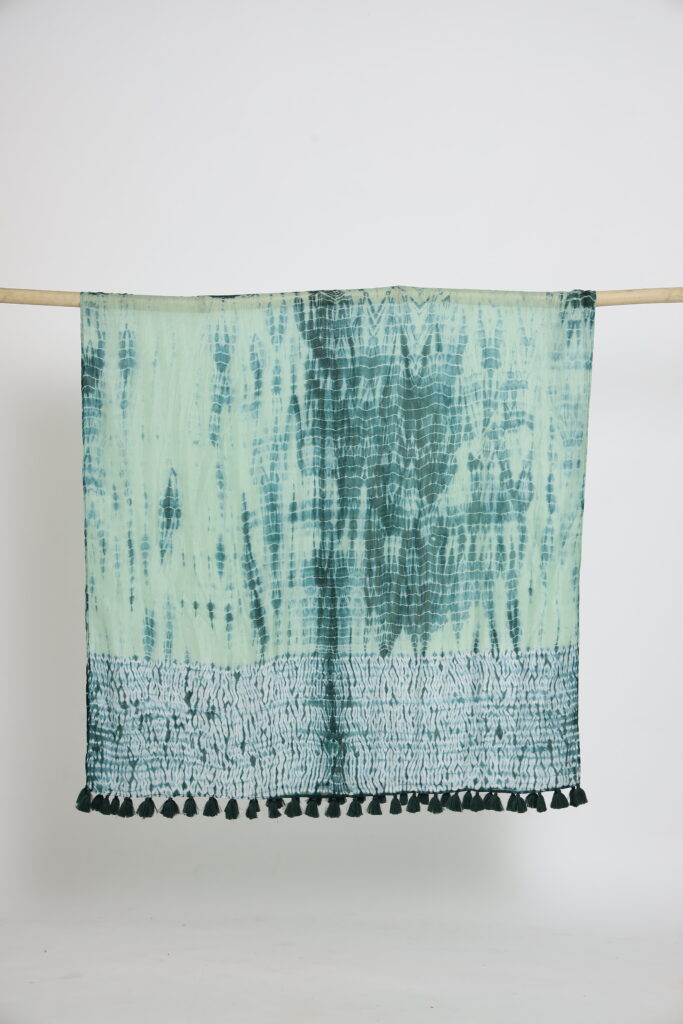
Different shibori methods
Our silk scarves incorporate shibori techniques to produce different textures, effects, and moods.
Karamatsu
The karamatsu (Japanese larch) technique results in concentric circles made of branching patterns that radiate from the center. This tree ring pattern is achieved by stitching semicircles over layers of fabric.
Tatewaku
The tatewaku (rising above) design is a sinuous ogee pattern that represents rising steam or rising above, as in rising above a situation. It was popular among people of high status in ancient Japan.
Ori Nui
The ori nui technique results in two dotted lines that are either parallel or undulating. Here, we sew a running stitch close to the edge of a fold.
Itajime
The itajime (board-clamping) technique requires placing the fabric between two wooden boards and tying everything together by string. This results in a design characterized by negative spaces, often with geometric patterns.
Mokume
The mokume (wood grain) technique results in lines and folds that resemble sand patterns and tree park. Evenly spaced, parallel stitches create a mesmerizing texture on our silk scarves.
Stage 1: Sketching
First, artisans trace or sketch the shibori pattern onto the silk fabric.
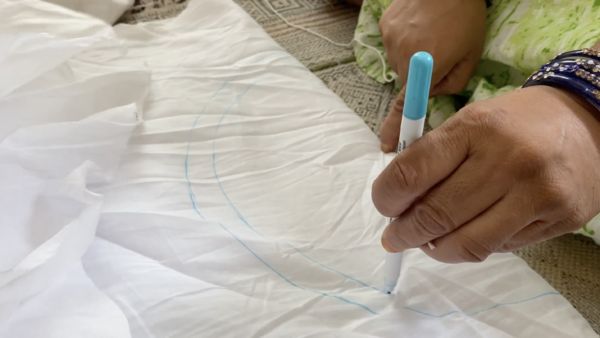
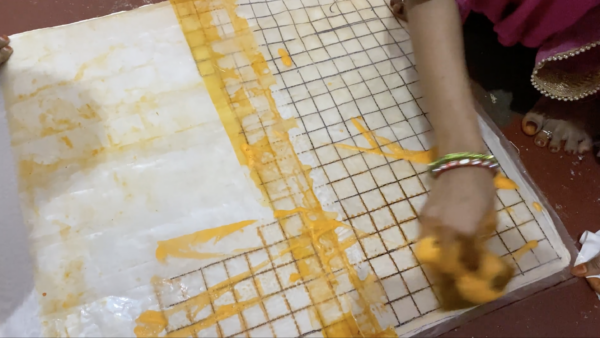
Stage 2: Stitching
Then, they hand stitch the design using the sketch as a guide. Different stitching methods are used depending on the design.
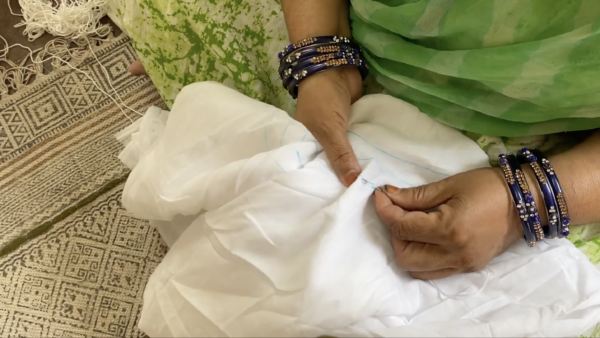
After stitching, the strings are gently pulled and knotted. When the string is pulled, the fabric gathers. This puckered area resists the dye and forms a unique shibori pattern.
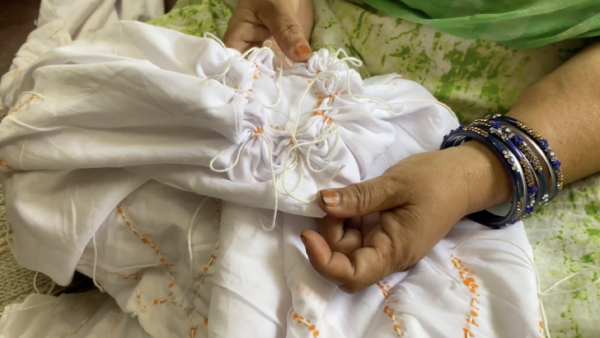
Stage 3: Hand-dyeing
Before dyeing, the silk scarves are soaked in water to help ensure uniform dye absorption, then dried.
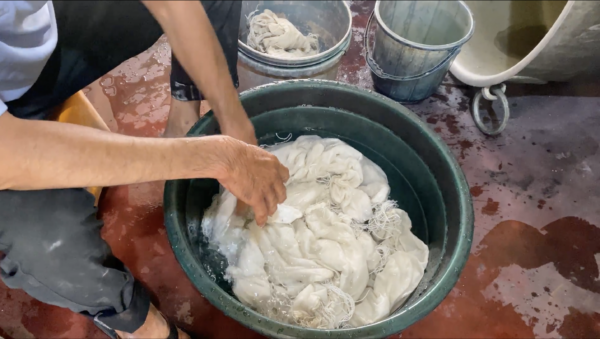
Next, dyes are carefully mixed to achieve the design at hand.
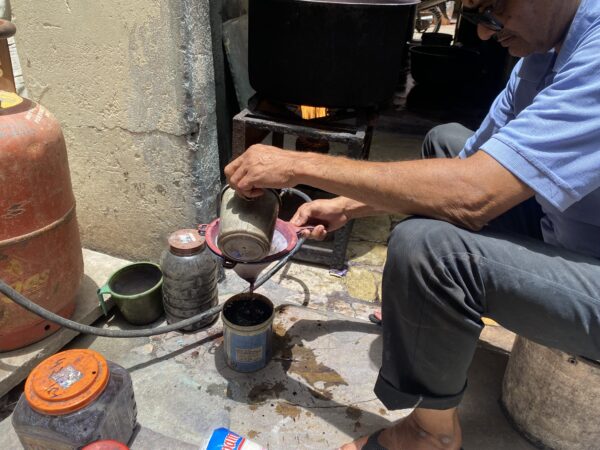
Our silk scarves are hand dyed in small batches for even application. Some silk scarves are dipped twice to create a multitone effect.
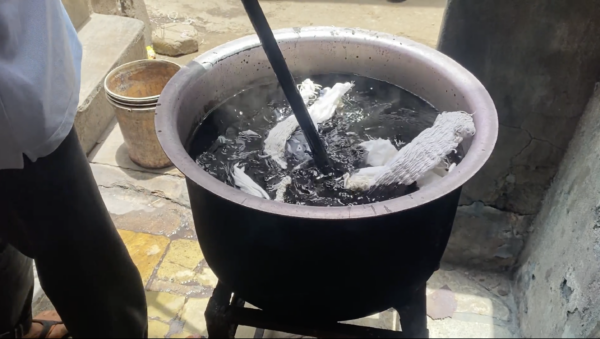
Once dyeing is complete, the scarves are hand washed to remove excess surface dye.
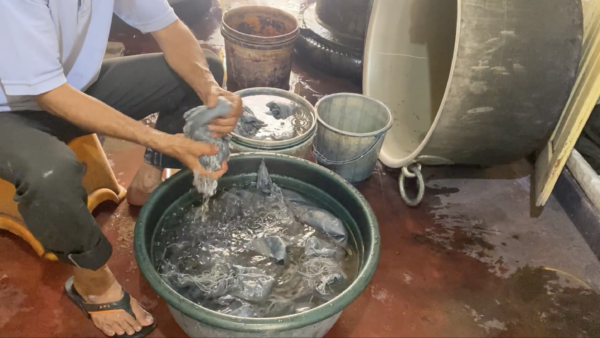
The last step is to cut the threads and pull the fabric.
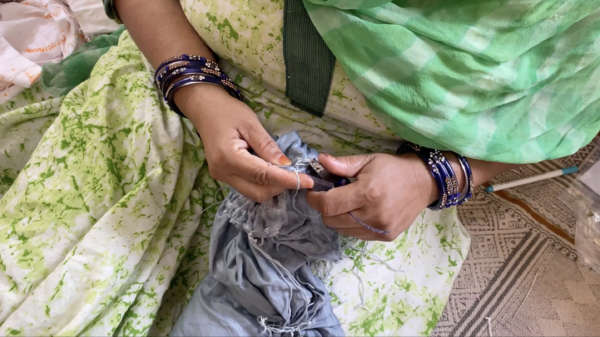
The finished product: the elegant and luxurious River Collection
At last, the beautiful shibori pattern emerges. This process is completely done by hand, which means there may be factors out of our control. Each piece is delightfully unique, and we hope you appreciate the work that goes into these artisan silk scarves. Watch our short video to see the entire process in motion and get a glimpse into what goes into making our original designs.

